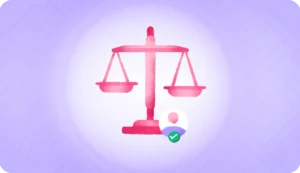When was the last time you did a KYC for a financial institution? Did you notice that you have had to do the KYC at least once in five months with most lenders? Ever wondered why this happens? This helps your lenders keep themselves updated with your latest information, without having to rely on third parties and price the data. According to an RBI mandate, financial institutions must update the customer information for each account holder periodically under a process referred to as ReKYC.
Need for ReKYC
Though every customer goes through a KYC process during the course of identification, it is necessary to do a ReKYC as per RBI norms. This helps the RBI battle money laundering and terrorist financing more effectively. Further, this reduces the risk of spurious or outdated information in the lender’s database. This also ensures that the customer’s personal and contact information is regularly updated with the bank, so they could use it for providing value added services, with the customer’s permission.
Process of ReKYC
Timing:
Keeping with RBI’s mandate, a ReKYC needs to be done after a specific interval for each customer. The interval for the KYC depends on the risk rating of the customer. The time intervals for a ReKYC are as follows:
- High: 2 years
- Medium: 8 years
- Low: 10 years
These numbers could be lower for each risk category, especially if the financial institution decides that they need updated information from the customer because they have detected some suspicious activity.
The risk ratings also need to be updated regularly, so that the corresponding time intervals for the KYC of customers also is changed.
In-person or online:
A high-risk customer is required to be physically present at a branch of the financial institution when submitting information for ReKYC. The customer can opt for a ReKYC option in a connected ATM as well.
A medium risk customer again is required to be physically present at a branch or an ATM of the financial institution for ReKYC.
A low-risk customer need not be physically present at the bank branch for ReKYC. They can submit their information through an online portal or app as decided by the financial institution.
Documentation:
Any one of the following documents can be submitted for ReKYC as a proof of ID and the other as a proof of address.
Passport – Your proof of Indian citizenship abroad.
Voter’s Identity Card – A validation of your right to vote.
Driving License – A validation of your right to drive.
Aadhaar Letter/Card – A popular and universally accepted national identity card in India.
NREGA Job Card – A card issued to members of Gram Panchayats who apply for employment under the scheme.
Generally, the Aadhaar serves as the most accepted identification in India. In most digital lending apps, KYC is often referred to as Aadhaar KYC or paperless KYC. It is also referred to as paperless KYC since there is a digital version of the Aadhaar referred to as e-Aadhaar. Both the original laminated Aadhaar card and the digital e-Aadhaar or a print out of the e-Aadhaar are valid as a proof of ID in most KYC processes.
Please note that every document that is submitted during ReKYC needs to be self-attested.
Apps that accept such documentation must have an OCR engine to scan them for text and images, which will then be stored in their database and compared with government databases for fraud detection. In most apps, the documentation is accompanied by a selfie (still pic or video) which will require capabilities such as face recognition built into the KYC process on the app. If you are a digital lender looking to build such features into your app, then HyperVerge, an identification solutions provider ranked high by NIST, is your best bet.
When you look for an eKYC solution, there are some features that are a must have for solid OCR and face recognition capabilities. Some of them are outlined below:
These are some of the things you can do:
For OCR:
Opt for an OCR engine that is on-demand, allowing API requests and enabling much faster processing, like the HyperTuring engine that forms the basis for the OCR solution from HyperVerge.
Opt for a service provider that is continuously improving itself by benchmarking against the competition and bettering its solution over time .
For Face recognition:
See if the AI-driven face recognition system will work for you through trial and error. Use images that are slightly skewed, blurry, or dark.
Another measure of how great a face recognition system is the ranking from NIST. Is the solution you have picked NIST ranked in the top ten at least, like HyperVerge?
Opt for passive liveness detection over active liveness detection as it is very accurate and more user friendly.
Is there a de-dupe protection that matches suspects 1:n against a government database? If so, you’ve got all your bases covered.
As a final note for both, check how well the face recognition integrates with third party tools you use. If it doesn’t require any coding or as little code as needed, you are in a good place.
Conclusion
ReKYC for any customer is an essential step to help RBI battle the evils of money laundering, terrorist financing and other financial crimes. ReKYC helps put a stop to all of these with the constant vigilance of digital vendors and the entities that support them in their endeavors. HyperVerge is one such entity and is proud to play a major role in equipping digital lenders with the technology they need to fight this battle.
FAQs
Can your KYC expire sooner than the minimum of two years specified for ReKYC?
Sometimes your KYC can expire in a matter of months, if the issuing authority feels that your information may have changed. An example is some banks where your KYC may expire after just a year. You would then need to do a ReKYC.
What happens if you do not do ReKYC on time?
If you do not do ReKYC as required, then your account may be restricted or sometimes even frozen (especially for high-risk customers).
What happens to the money in a digital wallet of a customer without KYC?
If the KYC is not done, then the customer’s access to the digital wallet will be restricted. However, any money transferred to the digital wallet of the customer will be made available after KYC.
What are the two types of KYC?
Aadhaar-based paperless KYC and in-person verification are the two types of KYC.





